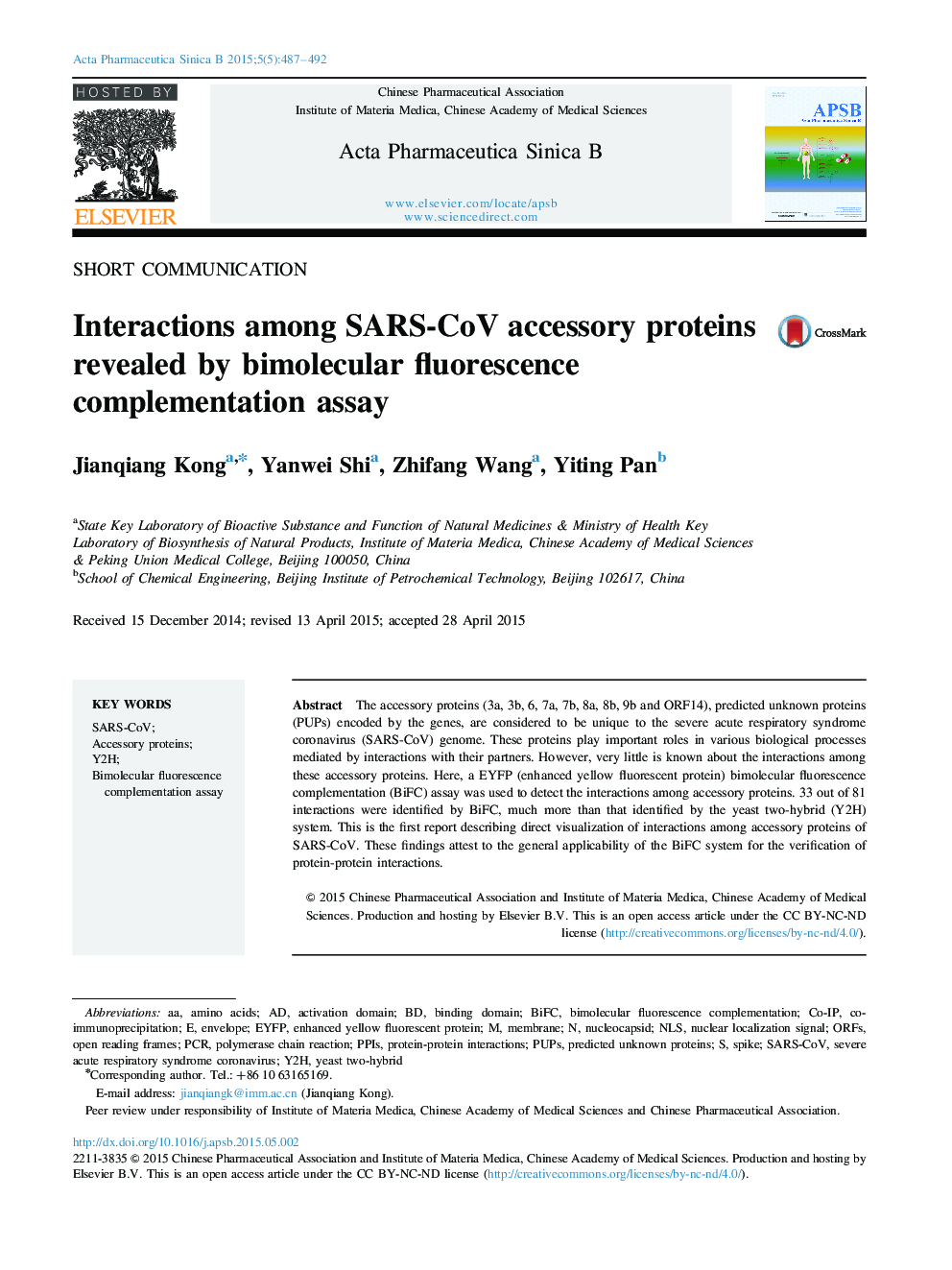| Article ID | Journal | Published Year | Pages | File Type |
|---|---|---|---|---|
| 2474628 | Acta Pharmaceutica Sinica B | 2015 | 6 Pages |
The accessory proteins (3a, 3b, 6, 7a, 7b, 8a, 8b, 9b and ORF14), predicted unknown proteins (PUPs) encoded by the genes, are considered to be unique to the severe acute respiratory syndrome coronavirus (SARS-CoV) genome. These proteins play important roles in various biological processes mediated by interactions with their partners. However, very little is known about the interactions among these accessory proteins. Here, a EYFP (enhanced yellow fluorescent protein) bimolecular fluorescence complementation (BiFC) assay was used to detect the interactions among accessory proteins. 33 out of 81 interactions were identified by BiFC, much more than that identified by the yeast two-hybrid (Y2H) system. This is the first report describing direct visualization of interactions among accessory proteins of SARS-CoV. These findings attest to the general applicability of the BiFC system for the verification of protein-protein interactions.
Graphical abstractTwo non-fluorescent fragments (VN and VC) derived from a fluorescent protein EYFP were separately attached to two accessory proteins of SARS-CoV (APs) and the resulting fusion proteins were co-expressed in Saccharomyces cerevisiae. When the two accessory proteins interact, the split EYFP fragments can be functionally reconstituted, allowing a fluorescent readout. Thereby, the BiFC method can be used for direct visualization of accessory protein interactions in living cells.Figure optionsDownload full-size imageDownload as PowerPoint slide
